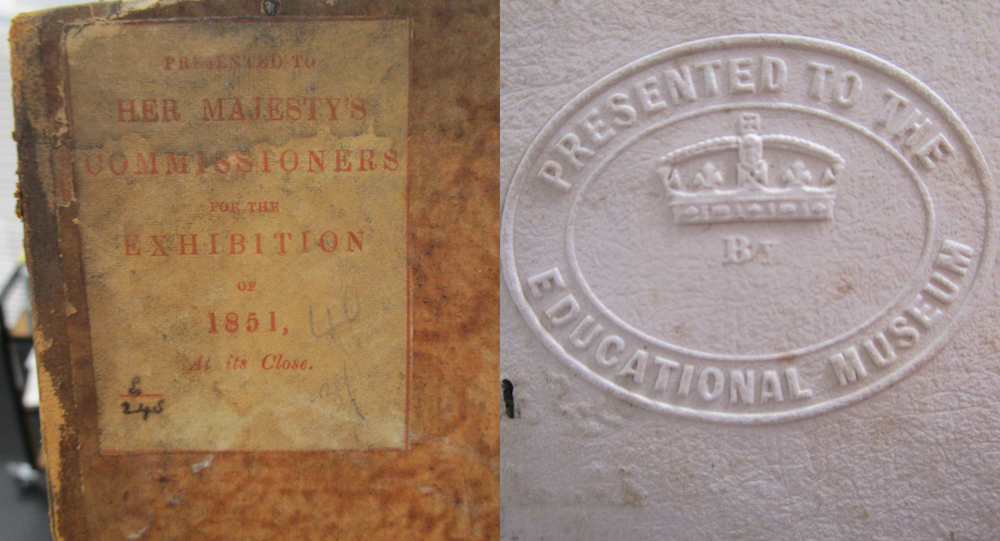Discover early Egyptian printed books in SOAS Library Special Collections


The Special Collections team uncovers early Egyptian printed books, which represent a significant period of development in the intellectual and military history of Egypt and the Arab world. The holdings within the SOAS Library provide useful primary source material to researchers in this area.
Among its rare books, SOAS Library Special Collections holds a significant collection of early printed Egyptian books from the former half of the 19th century. These books are rare examples of early printed books in North Africa and the Arab world and provide useful insight into the political and intellectual development of modern Egypt.
History of early printing in Egypt
The practice of printing with movable metal type was introduced to Egypt during the Napoleonic campaigns of 1798-1801. The French established imprimeries nationales at Alexandria, Giza, and Cairo, overseen by Joseph Marcel and Joseph-Emmanuel Marc-Aurel. When the French left in 1801, they took their equipment with them, but print culture continued to develop throughout early 19th-century Egypt.
The first indigenous Arabic press, the Bûlâq press, was established in 1820 as a government printing press in the Bûlâq port of Cairo, under the rule of Ottoman governor Muhammad ‘Ali Pasha al-Mas'ud ibn Agha (1769-1840). In preparation, three printing presses were acquired from Milan, and the Syrian-Egyptian typographer, Nicola Musabiki, was sent to Milan and Rome to study print and type. Muhammad ‘Ali sought to modernise Egyptian society through reform to education, bureaucracy, and military organisation. A government printing press was a necessary organ in the process of modernisation – publishing military regulations, manuals, pamphlets, decrees but also grammars and educational textbooks.
The output of the press reflected the needs of the day, and almost all the early military books were translated from foreign works. The press published its first book – Dizionario Italiano e Arabo, an Italian-Arabic dictionary by Raphael Antoine Zakhour, an Egyptian-born Roman Catholic – in 1822. Unfortunately, SOAS Library does not hold a copy of this first work, but there is a copy at the British Library, which is available via Google Books.
From 1822 until 1842, the press published approximately 243-252 works, with many earlier publications being military works. Almost half of these early publications were in Ottoman Turkish. The press was overseen by the Ministry of Defence until 1837, when authority was transferred over to the Ministry of Education, seeing a shift in the output of the press. By 1851 the press issued almost 570 works in Turkish, Arabic and Persian.
Bûlâq Press books in SOAS Special Collections
SOAS holds a significant collection of early printed books from Egypt, including 91 works published by the Bûlâq Press. These holdings represent the broad output from the early years of the press, spanning works published between 1825 and 1850. How these volumes made their journey from Cairo to SOAS can be traced through the materials evidence found within the books. Each of the early Bûlâq books in the SOAS Special Collections include labels on the binding, detailing that these works were ‘Presented to Her Majesty’s Commissioners for the exhibition of 1851, at its close’.
How these volumes made their journey from Cairo to SOAS can be traced through the materials evidence found within the books.
The official catalogue for the 1851 exhibition lists among the items for the Egyptian exhibit: “one hundred and sixty-five volumes of works in Turkish, Arabic, and Persian, published at Boulac” (Entry 248, Page 219). After being brought to London for the Great Exhibition, the books then found their way into the collection of the Educational Museum, as evidenced by an embossed stamp found in each volume. This refers to the Educational Division of the South Kensington Museum, whose 1860 catalogue includes 114 early Egyptian titles, including all the Bûlâq items now found in the SOAS collection.
SOAS accession registers detail that the 91 Bûlâq items were accessioned in 1941, along with two other early Egyptian books printed in Alexandria. The books were catalogued in 1998 and remain accessible via the SOAS Online Library Catalogue. Of the titles at SOAS, twenty-five are military texts; twenty-one are scientific, mathematical, or craft-based; nineteen are medical; fourteen are veterinary; five are historical; five are geographical; and four are concerned with literature, languages, and ethics. Fifty-six titles are in Arabic, while thirty-four are in Turkish.
The output of the Bûlâq Press represents a significant period of development in the intellectual and military history of Egypt and the Arab world. The holdings within the SOAS Library include a variety of technical translations and military manuals that chart the progression of Muhammad ‘Ali’s administrative and military reforms and provide useful primary source material to researchers in this area or the field of Ottoman and Arabic print culture.
Reading list
If you're interested in reading more, here are some resources:
- A Survey of Arabic-character Publications Printed in Egypt during the Period of 1238-1267 (1822-1851) by Cheng-Hsiang Hsu.
- Muhammad Ali Pasha, the Great Exhibition of 1851, and the School of Oriental and African Studies Library by Peter Colvin.
- The Government of Egypt’s Press (Matba`at Bûlâq): A Historical Analysis of Two Hundred Years of Performance by Ali Bakr Hassan.
About the author
Alex Kither is a Special Collections Curator (Rare Books & Manuscripts) at SOAS University of London.




